Attacking Akō Castle: Tactics
This is for those who want to take their time to thoroughly enjoy the essence of Akō Castle: Kōshū-ryū war tactics. The stone walls of Akō Castle were built using a defensive mechanism constructed in a zigzag pattern, known as yokoya gakari, which can't be seen without actually attacking the castle. Take a good, long look at the outer stone walls and aerial photographs of Akō Castle. They aren't the what you'd usually focus on while touring the castle. Would you be able to conquer this castle?
- TOP
- Exploring Akō Castle
- Attacking Akō Castle: Tactics
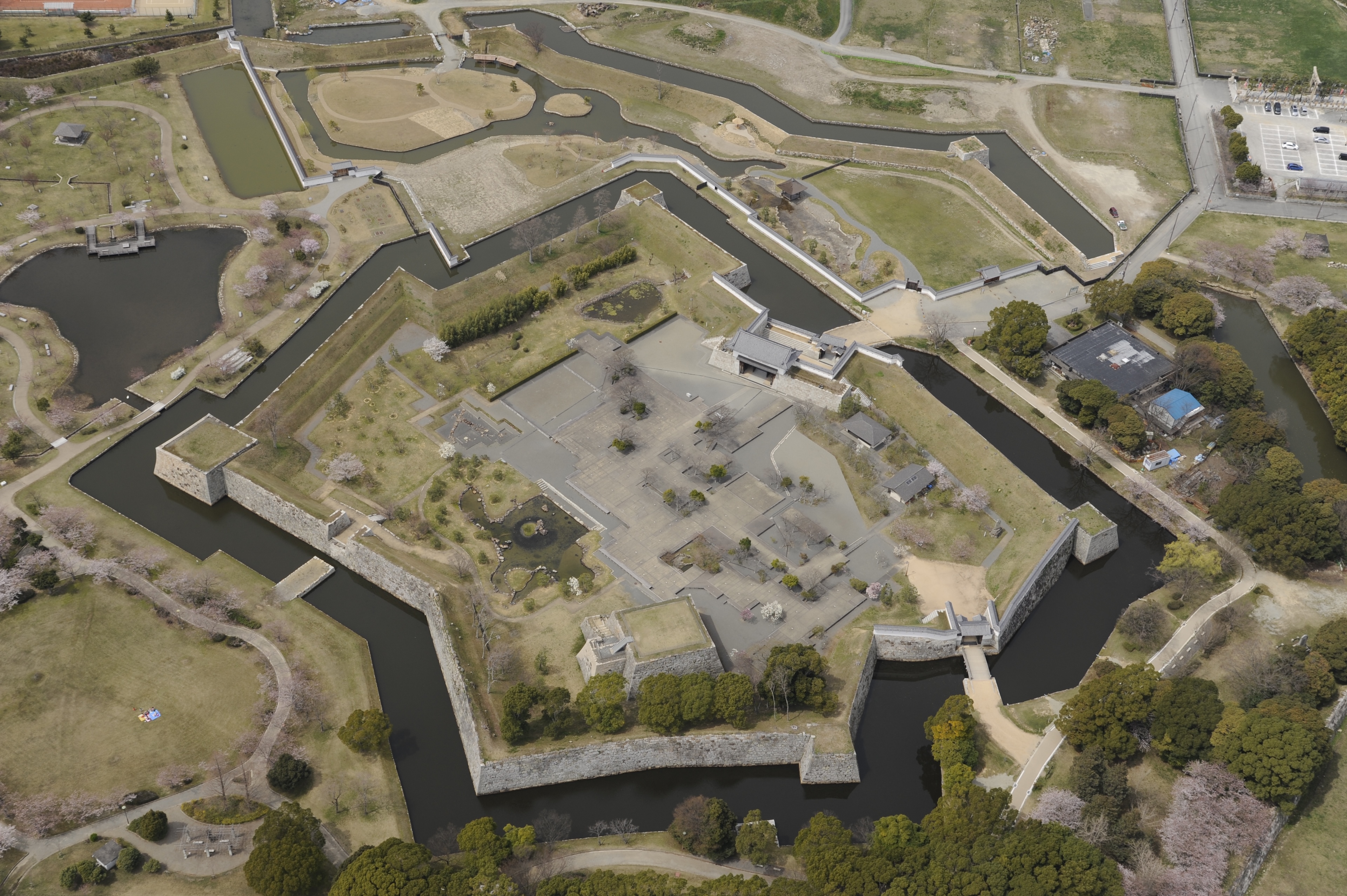
This is for those who want to take their time to thoroughly enjoy the essence of Akō Castle: Kōshū-ryū war tactics. The stone walls of Akō Castle were built using a defensive mechanism constructed in a zigzag pattern, known as yokoya gakari, which can't be seen without actually attacking the castle. Take a good, long look at the outer stone walls and aerial photographs of Akō Castle. They aren't the what you'd usually focus on while touring the castle. Would you be able to conquer this castle?
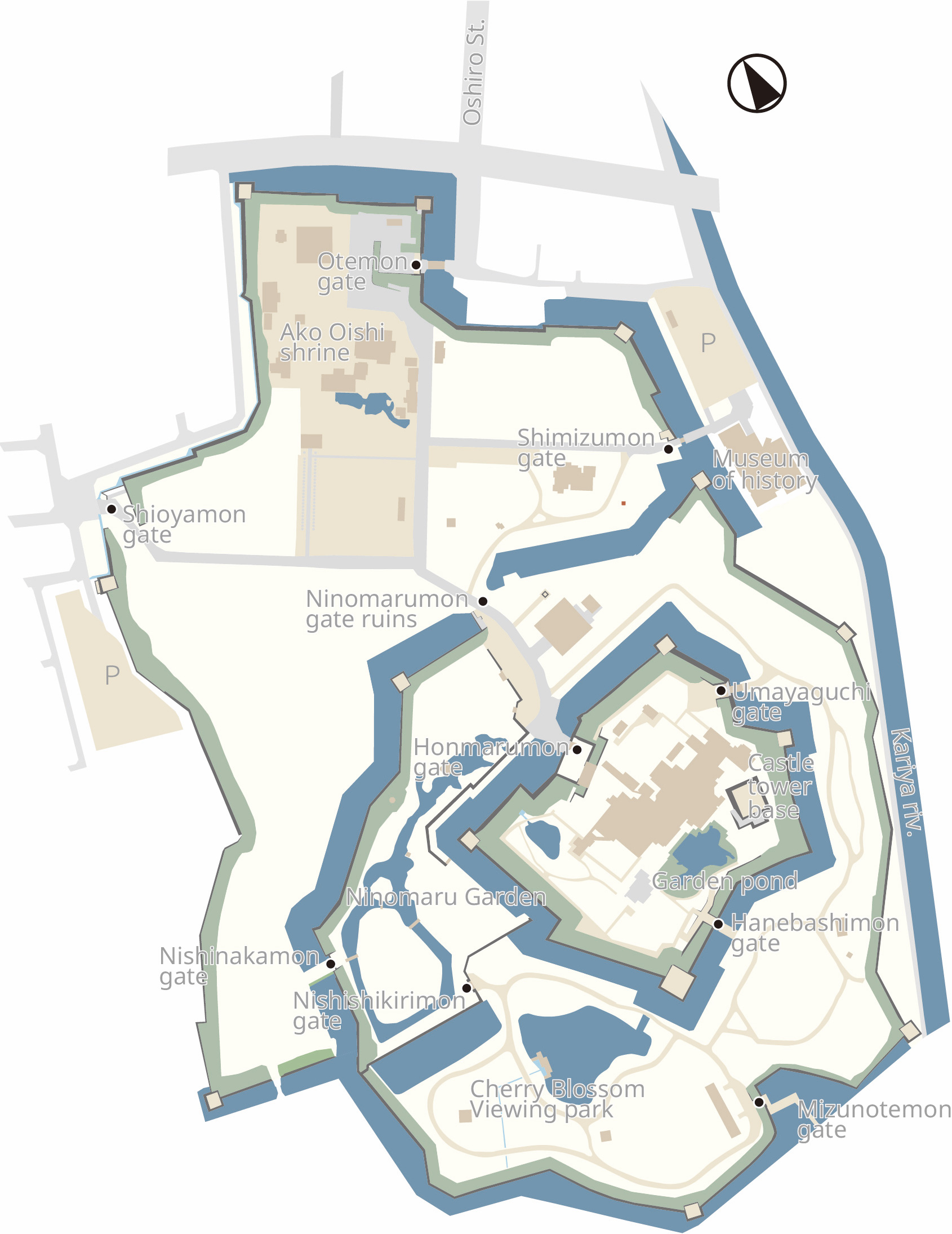
Ote Gate Masugata
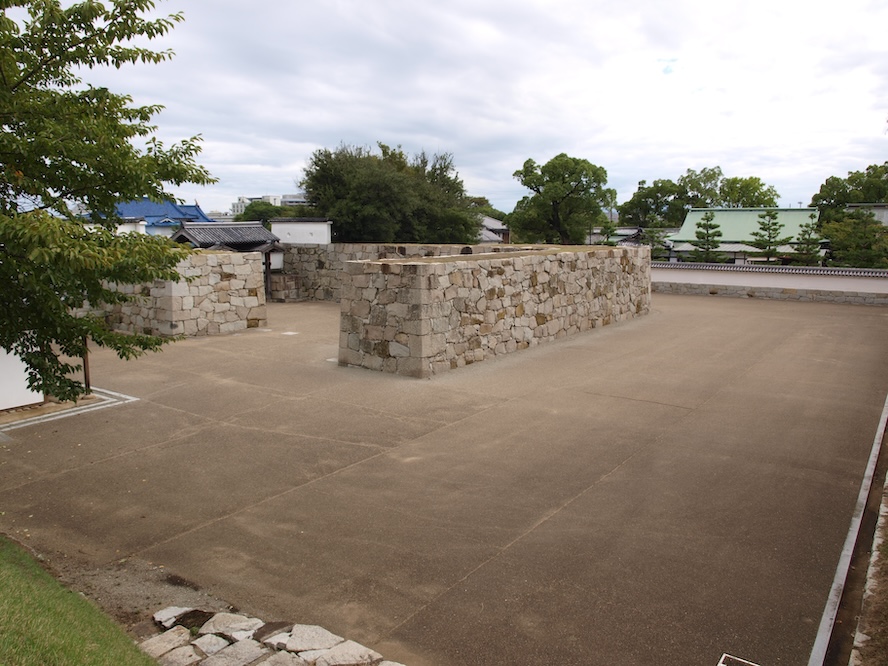
The Ote gate masugata, which makes up the entrance area of Akō Castle, is the sturdiest of the castle's defense structures. There are two gates, a kouraimon and a yaguramon, built at a right angle. These gates create a square formation known as masugata. At the back of the masugata is a spacious mushadamari, a gathering spot for soldiers, that gave them an advantage when returning enemy fire.
View Location on Google MapsShioya Gate Site
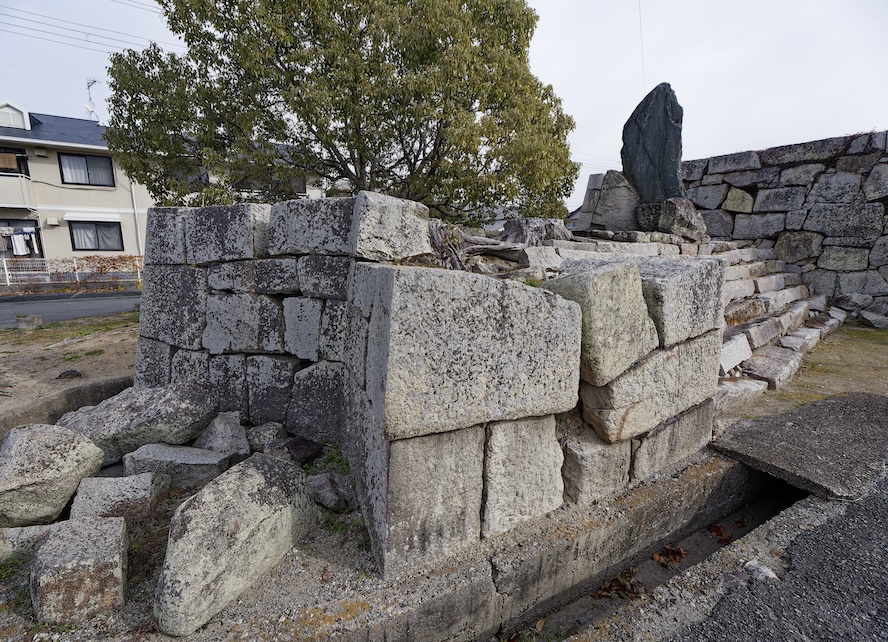
This gate, which had a wooden bridge in front in the past, was a weak point of Akō Castle. The stone walls to the side of the gate have a unique construction that can't be found anywhere else in Japan, with acute and obtuse angles purposefully built into the walls. This zigzag formation, known as ore, helped those defending the castle to attack enemy soldiers approaching the gate.
View Location on Google MapsYokoya Byoubu-ore
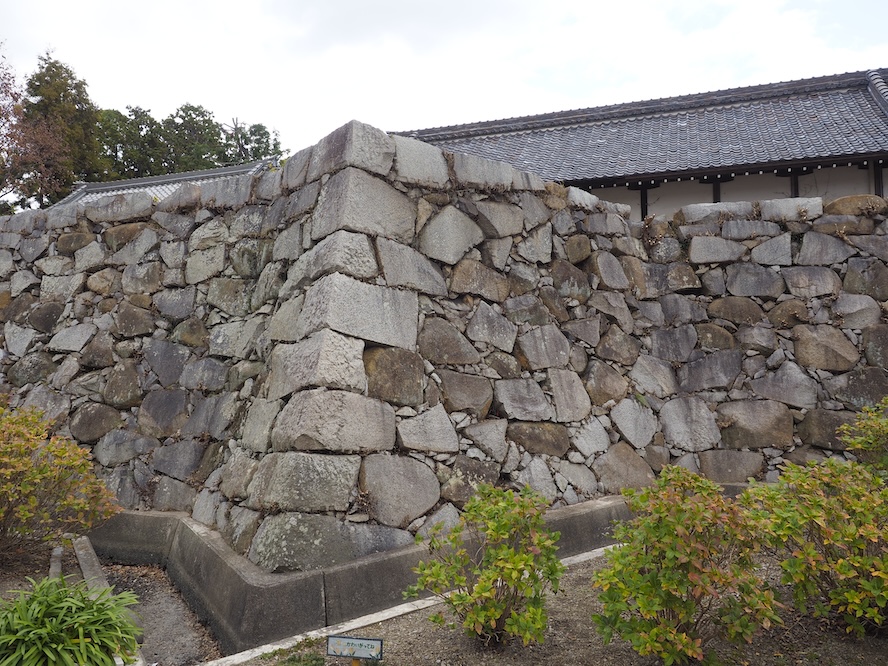
A stone wall construction where the wall juts out at acute angles at corners. It is believed that this construction was used to shoot arrows at an enemy from both sides.
View Location on Google MapsUmayaguchi Gate
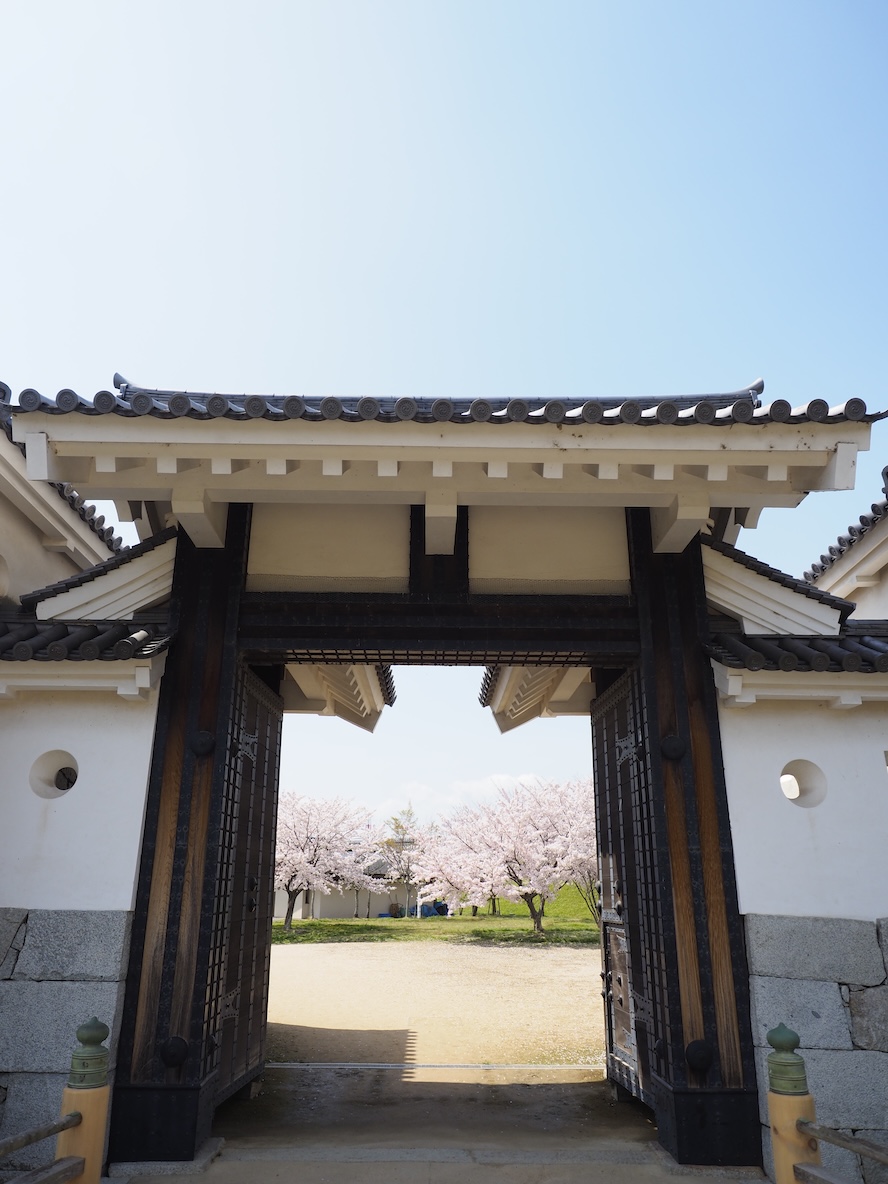
Excavation efforts found the foundation and side walls of this gate in excellent condition. This led to repairs of the gate, bridge, earthen walls, and the surrounding stone walls. The stone walls to the side of the gate are curved, which allowed soldiers to attack enemies in a radial pattern.
View Location on Google MapsStatue of Yamaga Sokō
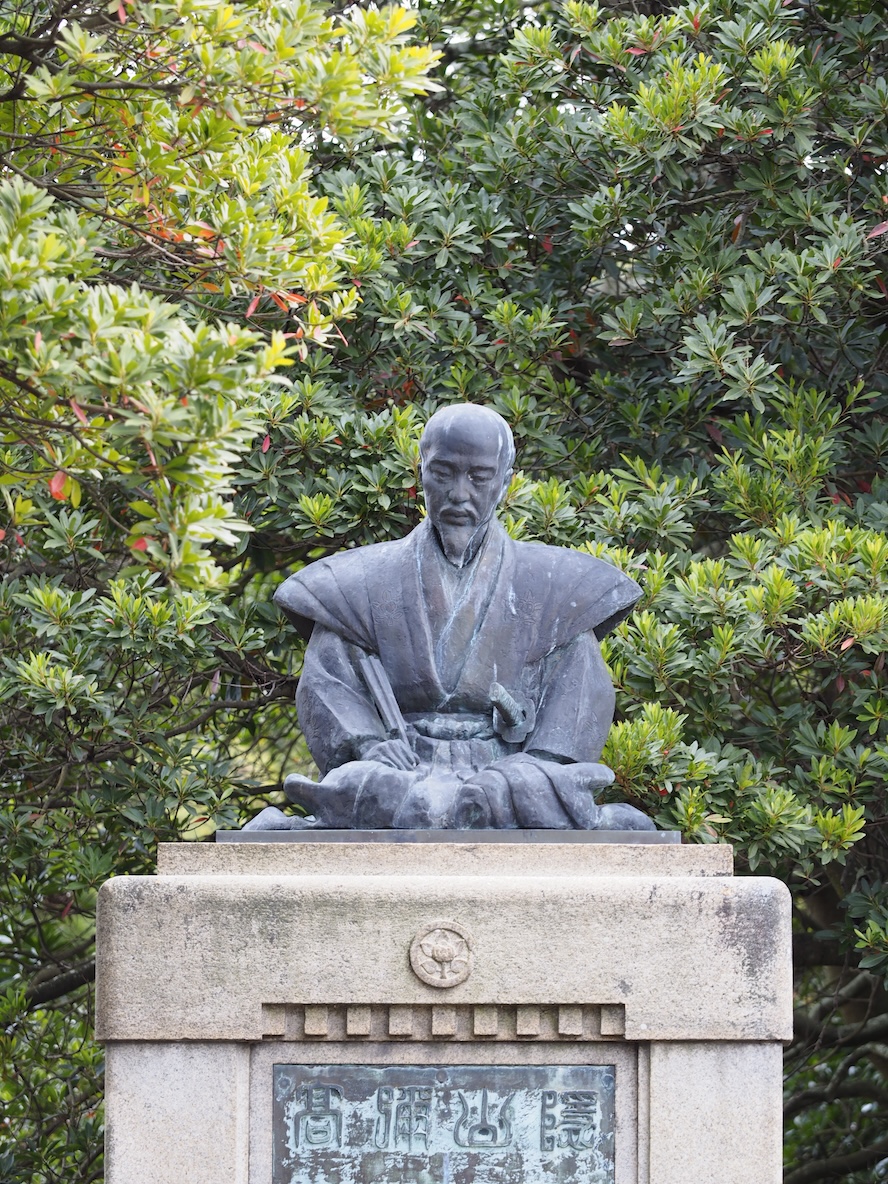
Asano Naganao, the first lord of Akō who was responsible for the construction of Akō Castle, was the student of Yamaga Sokō, the founder of Yamaga-ryū war tactics. His diary noted that the layout of stone walls near Ninomarumon Gate were revised during the construction of Akō Castle. This was verified by the results of excavation efforts. Yamaga was charged with challenging Tokugawa authority and sentenced to exile in Akō for 9 years, where he wrote many works.
View Location on Google MapsMizute Gate Site

The site of the southern gate of Akō Castle, which faced the Seto inland sea. It was a slightly narrow gate with steps right out front that led to a dock.
View Location on Google MapsCurved Stone Walls
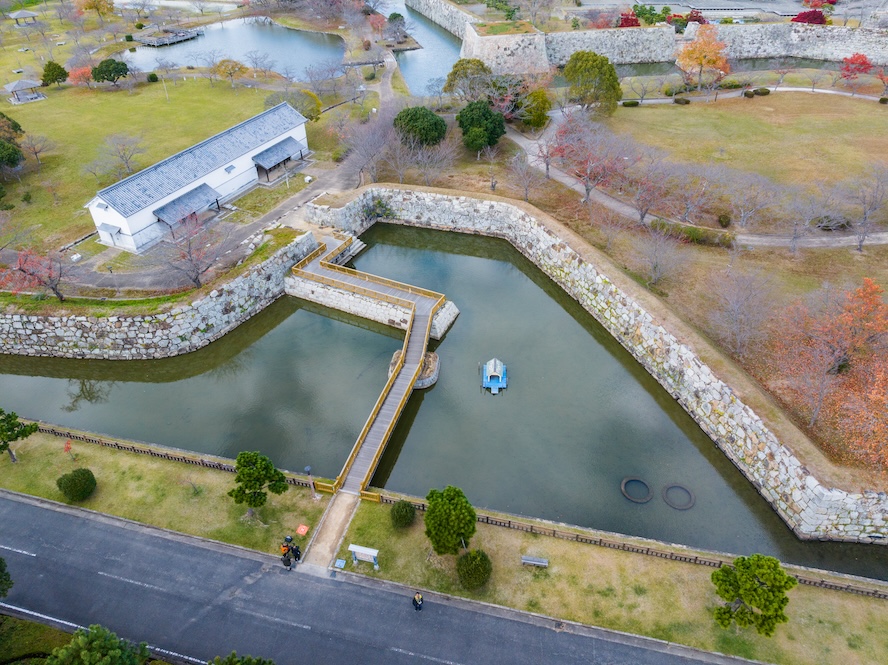
The stone walls by the Ninomaru and the Mizute gate form a large curve. It is believed that the walls were built in a curve to either make it easier for boats to dock at Mizute gate or to launch radial attacks onto enemies charging from the sea.
View Location on Google Maps